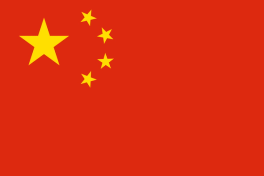This goes
to space
Tianlian-2, 03
Tianlian-2 is a new communications satellite that will be used to provide real-time communications between orbiting satellites and ground control stations.
The Chinese tracking and data relay satellites were developed by the China Academy of Space Technology and are similar to the American Tracking and Data Relay Satellite System in concept. The system is designed to support near-real-time communications between orbiting spacecraft and ground control and will complement ground-based space tracking, telemetry stations, and new ships to support future space projects.
The geostationary relay satellite is based on the DFH-4 platform and is the second generation of this Chinese relay satellite network.
Courtesy of NASA, CAST
Image: DFH-4 platform, Credit: CAST
On this
rocket
Chang Zheng 3B/E
This is the Chang Zheng 3B/E rocket.
It is an upgraded version of the retired Chang Zheng 3 and sports a longer first stage and longer boosters that allow it to carry heavier satellites into space.
Despite its success and capability, it uses highly toxic propellants for its first two stages and boosters: hydrazine and nitrogen tetroxide. Exposure to these fuels before launch and as the boosters and stages fall back to Earth near (and sometimes on) populated and un-evacuated villages can lead to severe health issues.
The rocket is being replaced with newer Chang Zheng rockets that use more standard, non-toxic fuels like liquid hydrogen, liquid methane, and liquid oxygen.
In recent years, the LM-3B/E launch vehicle is developed to increase the GTO capacity up to 5,500kg. LM-3B/E has nearly the same configurations with LM-3B except its enlarged core stage and boosters.
Photo credit: CASC
From this
launch site
LC-2, Xichang Satellite Launch Center, People's Republic of China
July 12, 2022
The space center was built in the early 1980s and takes its name from the closest city, Xichang in Sichuan Province, the People's Republic of China.
It is used to launch international scientific and commercial missions as well as satellites for the military.
The site is landlocked, so launches have to take place over land and populated areas.
This creates a potential danger to people living in the path of falling rocket stages and boosters that are discarded during launch.
Photo credit: CGTN
Here's where to view Tianlian-2, 03
Viewing Sites
- Xichang, People's Republic of China
GET THE SUPERCLUSTER APP
THE SUPERCLUSTER PODCAST
A podcast exploring the amazing milestones that changed space history, the wildest ideas that drive our future, and every development in this new Golden Age of Space.
SUPERCLUSTER ON PATREON
Your support makes the Astronaut Database and Launch Tracker possible, and keeps all Supercluster content free.
SUPPORTCOPYRIGHT 2021 SUPERCLUSTER LLC

